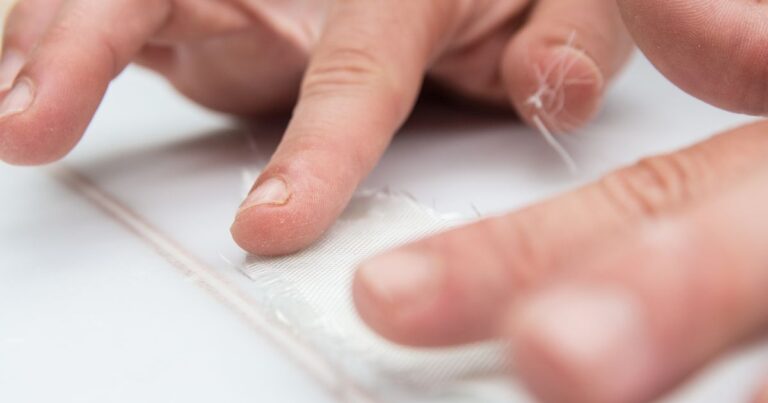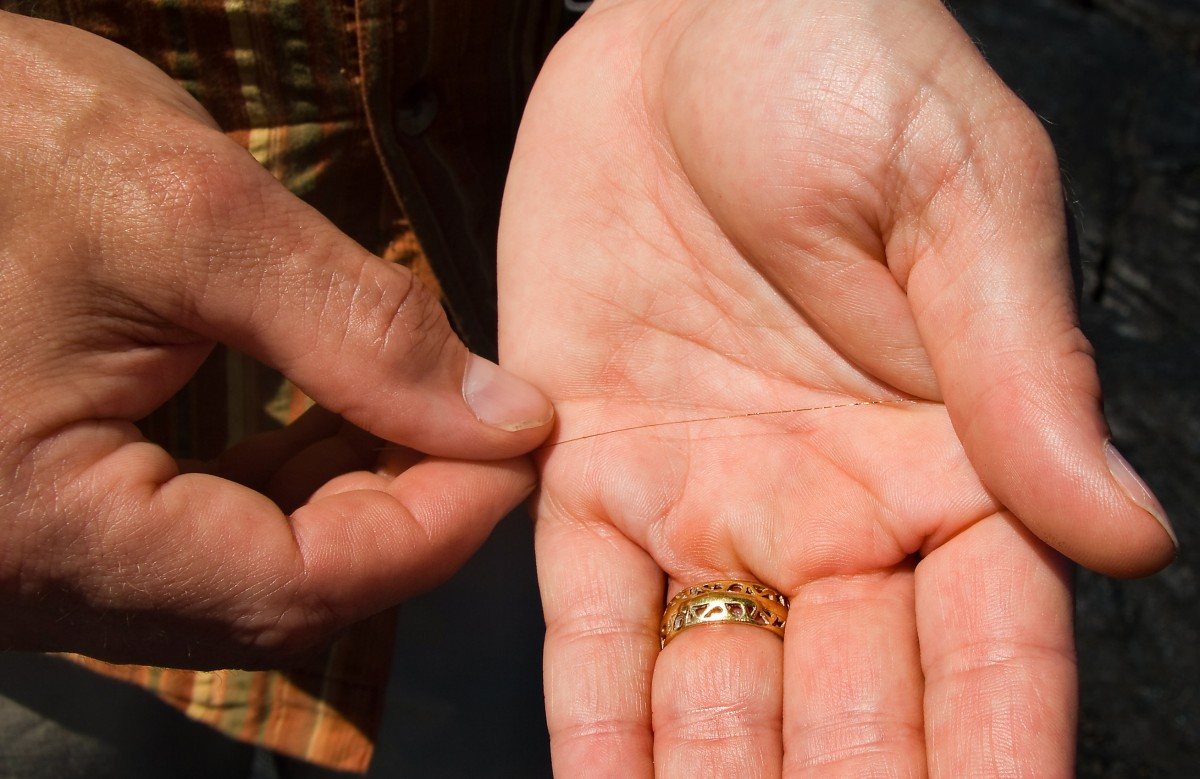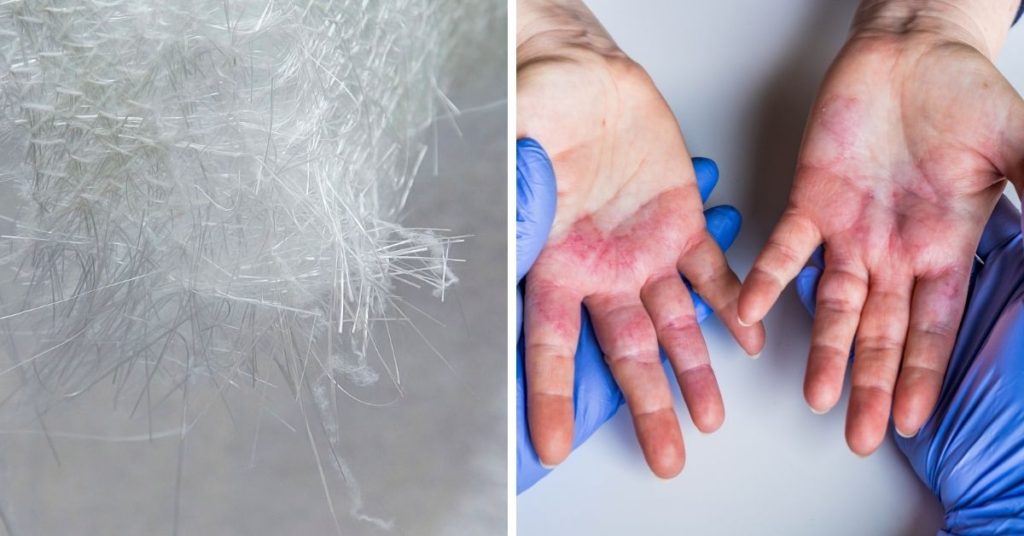How Do You Get Fiberglass Out Of Your Hands

Working with insulation, particularly fiberglass, is a common necessity for homeowners and HVAC professionals alike, especially when improving energy efficiency to lower those utility bills. Whether you're insulating your attic, sealing ducts, or upgrading your HVAC system, the itchy aftermath of fiberglass exposure is often unavoidable. This article provides proven methods to remove fiberglass splinters from your skin and prevent future irritation, ensuring a smoother, more comfortable, and energy-efficient home improvement process.
Understanding the Fiberglass Foe: Why Does It Itch?
Fiberglass insulation is composed of extremely fine glass fibers. These microscopic shards are designed to trap air, creating an effective barrier against heat transfer. While excellent for insulation and energy savings, these fibers readily embed themselves in your skin upon contact, causing the characteristic itching and irritation. Unlike wood splinters, fiberglass doesn't decompose, and the body doesn't naturally expel it, making effective removal techniques crucial.
Immediate First Aid: The Golden Rules
Prompt action is key to minimizing irritation. Here's what to do immediately after contact:
- Don't Rub! This is the most important rule. Rubbing only drives the fibers deeper into your skin, making removal much more difficult.
- Cool Water Rinse: Gently rinse the affected area with cool water. Avoid hot water, as it can open pores and further embed the fibers.
- Avoid Soap Initially: Soap can sometimes aggravate the situation by causing the fibers to stick more firmly to the skin.
Effective Removal Methods: A Step-by-Step Guide
Several methods can effectively remove fiberglass splinters. The best approach depends on the severity of the exposure.
Method 1: Adhesive Tape – The First Line of Defense
This is often the simplest and most effective method for minor exposure:
- Choose Your Tape: Duct tape, masking tape, or even packing tape can work. The stickier, the better.
- Apply the Tape: Gently press the tape onto the affected area, ensuring good contact.
- Lift and Repeat: Slowly and carefully lift the tape. Inspect the tape for visible fibers. Repeat this process with fresh pieces of tape until you see no more fibers adhering to the tape.
Pro-Tip: For sensitive areas, try using clear tape. It's usually less aggressive on the skin.
Method 2: Baking Soda Paste – The Gentle Exfoliator
Baking soda has mild abrasive properties that can help dislodge stubborn fibers:
- Create a Paste: Mix baking soda with water to form a thick paste.
- Apply to the Area: Gently spread the paste over the affected skin.
- Massage Lightly: Using circular motions, gently massage the paste for a minute or two.
- Rinse Thoroughly: Rinse the area with cool water and pat dry.
This method is particularly useful for larger areas with less severe exposure. Consider using this method when installing new smart thermostats and sensors, which can have rough handling.
Method 3: White Glue – The Fiber Trap
White glue can act as a gentle adhesive to lift out fibers:
- Apply a Thin Layer: Spread a thin layer of white glue over the affected area.
- Let It Dry Completely: Allow the glue to dry completely, forming a solid layer. This may take several minutes.
- Peel Off Gently: Slowly and carefully peel off the dried glue. The fibers should adhere to the glue as it's removed.
This is a good option for localized areas where you can easily control the glue application and removal.
Method 4: Tweezers – Precision Removal
For visible, larger fibers, tweezers can be used:
- Sterilize Your Tweezers: Clean the tweezers with rubbing alcohol to prevent infection.
- Locate the Fiber: Carefully examine the area to identify the visible fiber(s).
- Grasp and Extract: Gently grasp the fiber with the tweezers as close to the skin as possible. Pull the fiber out in the direction it entered.
- Clean the Area: After removal, clean the area with antiseptic.
Caution: Avoid digging or squeezing the skin, as this can cause further irritation and potential infection.
Method 5: Wet/Dry Vacuum – For Large Area Exposure
A wet/dry vacuum can be effective for removing fibers from larger skin surfaces, particularly after working in an attic or crawl space:
- Use a Hose Attachment: Attach a hose attachment to the vacuum cleaner.
- Gently Vacuum the Skin: Hold the hose attachment slightly above the skin and gently vacuum the affected area. Avoid pressing the attachment directly onto the skin.
This method is best suited for removing loose fibers and debris from the skin's surface. It's particularly helpful after removing old, inefficient insulation before installing new, high-performance materials eligible for energy-efficiency rebates.
Post-Removal Care: Soothing Irritated Skin
After removing the fibers, it's essential to soothe the irritated skin:
- Cool Compress: Apply a cool compress to the area for 15-20 minutes to reduce inflammation.
- Moisturizing Lotion: Apply a fragrance-free, hypoallergenic moisturizing lotion to hydrate and soothe the skin. Look for lotions containing aloe vera or calamine.
- Topical Corticosteroid Cream (Optional): If the itching and inflammation persist, consider applying a thin layer of over-the-counter hydrocortisone cream. Follow the instructions on the packaging.
Consult a doctor if the irritation persists or worsens despite these measures. They may recommend stronger topical medications or oral antihistamines.
Prevention is Better Than Cure: Protecting Yourself from Fiberglass Exposure
The best way to avoid the discomfort of fiberglass splinters is to prevent exposure in the first place. Here's how:
- Wear Protective Clothing: When working with fiberglass insulation, always wear long sleeves, long pants, gloves, and a hat. Cover as much skin as possible.
- Eye Protection: Wear safety glasses or goggles to protect your eyes from airborne fibers. This is especially important when blowing in loose-fill insulation.
- Respirator or Dust Mask: A respirator or dust mask will prevent you from inhaling fiberglass fibers. Choose a mask with a high filtration efficiency, such as an N95 or P100.
- Barrier Cream: Applying a barrier cream to exposed skin can help prevent fibers from embedding.
- Work in a Well-Ventilated Area: Proper ventilation will help reduce the concentration of airborne fibers. Consider using a fan to direct airflow away from you.
- Wash Clothes Separately: After working with fiberglass, wash your clothes separately from other laundry in hot water with plenty of detergent. Run an extra rinse cycle. Consider disposing of particularly contaminated clothing.
Investing in proper protective gear is a small price to pay for avoiding the irritation and potential health risks associated with fiberglass exposure. Furthermore, when selecting new insulation for energy upgrades, consider alternatives like mineral wool or cellulose, which can offer similar R-values with potentially less skin irritation.
Energy Efficiency and Smart Home Integration: A Holistic Approach
Dealing with insulation and HVAC systems goes hand in hand with improving energy efficiency and integrating smart home technology. Upgrading to energy-efficient insulation, like closed-cell spray foam or high-density fiberglass, can dramatically reduce heat loss and gain, leading to significant energy savings. According to the Energy Star program, proper insulation can save homeowners up to 15% on their heating and cooling costs.
Furthermore, integrating smart thermostats and sensors with your HVAC system allows for precise temperature control and energy management. Smart thermostats learn your habits and adjust the temperature accordingly, optimizing energy use without sacrificing comfort. Many models also offer features like geofencing, which automatically adjusts the temperature when you leave or arrive home, and energy usage reports, which provide valuable insights into your energy consumption patterns. Some utilities also offer rebates on smart thermostats, further enhancing the ROI of these energy-saving devices.
Working with a qualified HVAC contractor is crucial for ensuring proper insulation installation and system optimization. A contractor can assess your home's specific needs and recommend the best solutions for maximizing energy efficiency and minimizing fiberglass exposure during the installation process. Remember to inquire about the contractor's safety procedures and their experience working with different types of insulation.
By understanding the proper techniques for removing fiberglass splinters, preventing future exposure, and embracing energy-efficient solutions, you can create a more comfortable, healthy, and energy-saving home environment.










